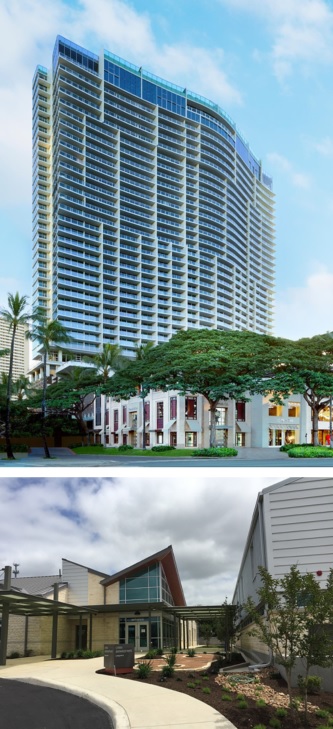Wood doors lend themselves to all kinds of design scenarios, sometimes simply adding beauty and style to a space, and other times performing as part of a complex safety protocol. Office buildings tend to fall into the latter category, as security is usually a high priority. Office construction clients need to think not only about the safety and security of their personnel but about expensive equipment and sensitive information.
The state of physical security has ramped up with new technology like biometrics and AI, but wood commercial doors—themselves a timeless design feature—can adapt to most client needs. Below are some ideas to consider when specifying wood doors for offices. Modern office doors have to do it all.

1. Security for Modern Office Doors
A commercial wood entry door presents many options in terms of construction. Add hardware and electronic access control, and you have a whole array of moving parts that must work together.
Some offices rely on electronic locks which are activated by RFID devices like keycards. However, many companies are moving beyond this once popular technology since they worry cards being lost, damaged or hacked. Some newer offices use “smart doors” that interact with employees’ smartphones and with a centralized security hub, which may or may not be on the premises. These allow a user to lock or unlock a door from anywhere.
Also growing in popularity are biometric scanners, which scan fingerprints or faces.
Alarms remain an important element for office doors, of course. An alarm might be used to signal when someone tampers with a locking apparatus or if a door is left open too long.
While it’s possible to retrofit existing doors, new construction or remodelling presents an ideal opportunity for a company to install all new doors with up-to-date security features.


2. Security Features for Commercial Office Doors
An advantage of wood is that it is relatively easy to custom cut to accommodate any security additions. Whether you need them designed for traditional locks and deadbolts or for cutting-edge security scanners, they will serve each need.
Experts expect the adoption of biometric tools to increase in the 2020s. These can be installed to work in conjunction with electric strikes to permit entry for authorized users. Electric strikes, used in place of traditional strike plates, work well for wood doors but wouldn’t work as well with, for example, glass.
Another trend affecting work space design and construction is the rise of coworking spaces. These locations cater to gig workers or remote employees by providing a place they can use at their leisure. As you can imagine, security is a big concern when many people have access to a building. Wood doors can provide the hip, modern look that these facility owners often want while also accommodating keypads and smartphone scanners.
The bottom line is, wood architectural doors are versatile enough for any office or mixed-use application, balancing appearance and performance. Talk with your customers about their security needs, and
contact Masonite Architectural for help specifying the ideal solution.



Masonite Architectural – Want help?
Our expert field of Territory Sales Managers can help guide you through the process. We’ll make sure you get the perfect doors to delight your clients on opening day (and for years to come).
We can apply our expertise of wood type, grain, stain and door design to complement your space. Often, designers give door hardware more consideration than the door itself. Masonite Architectural knows the whole opening matters. We offer a wide selection of veneer options and available material choices.
If you’re ready to get started on your current project, you can call 1-877-332-4484 or email us archinfo@masonite.com





























